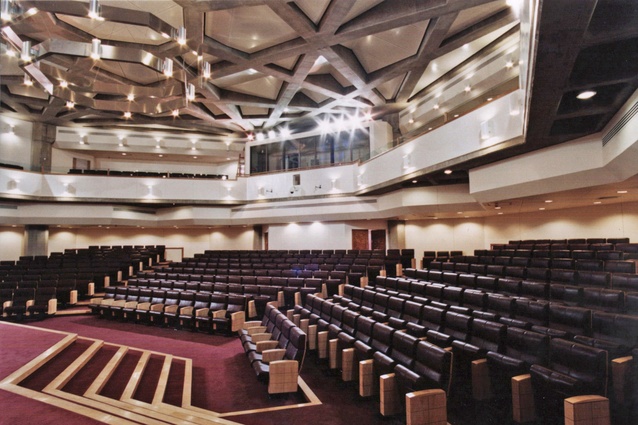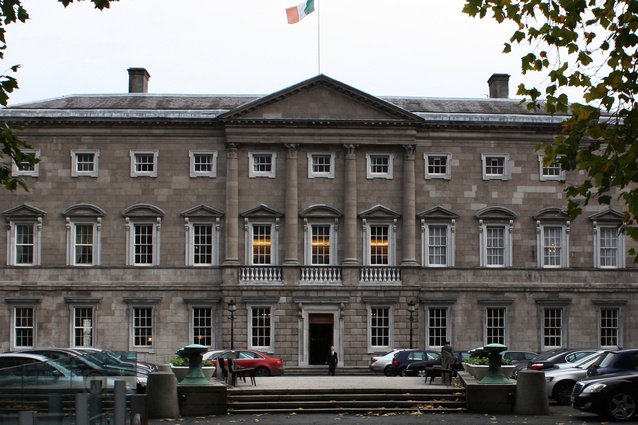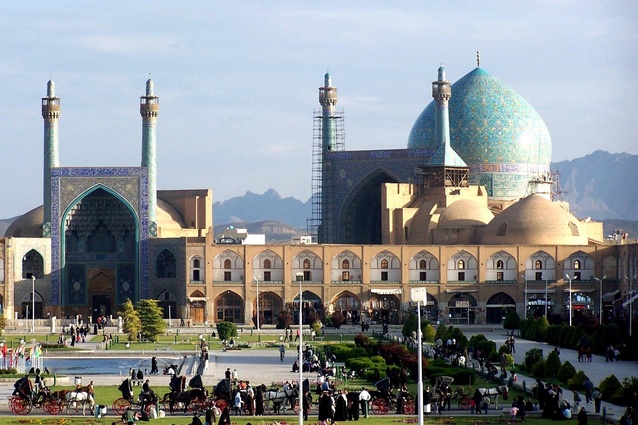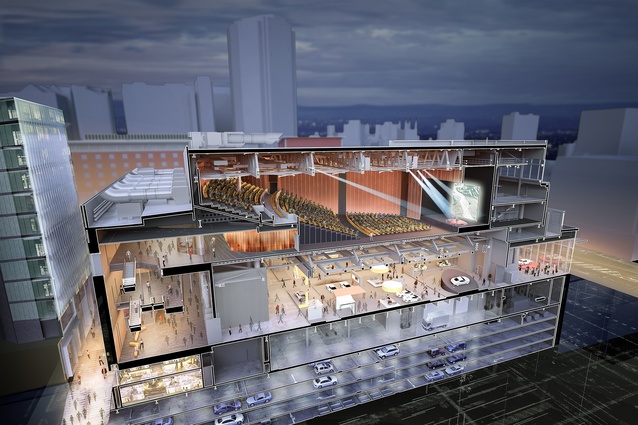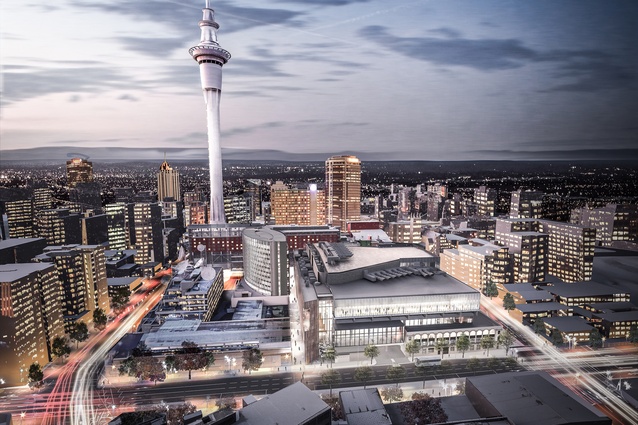Architect profile: Ilona Haghshenas
Claire McCall talks to Ilona Haghshenas, senior architect at Warren and Mahoney, about working in architecture in Iran, Ireland and Auckland.
Claire McCall: Your mother is Irish and your late father was Iranian. How did this cultural melange affect your career?
Ilona Haghshenas: It introduced me to the joys of diversity early on in life; I learned that it is the marriage of our differences that makes this world interesting! Difference is strength rather than a weakness and my Irish/Iranian roots give me resilience. It has allowed me to move, change and find “home” wherever I am.
The same applies to my career. Coming from a diverse cultural background has prepared me to collaborate with different people. It has taught me to accept others as they are and to take a few minutes to find that common ground that will form the foundations of our collaboration. Strong teams are often made up of very different people; it is the links that count.
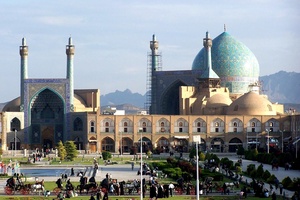
CM: Your parents moved to Iran when you were a baby and later you studied at the School of Architecture at the National University of Iran. Tell us about that experience.
IH: Studying architecture in Iran comes with its own brand of magic. Due to travel restrictions on Iranians, we were not able to go abroad to see the many great buildings we were studying but we were taught against a backdrop of thousands of years of history. We were surrounded by buildings such as Persepolis (Takht-e-Jamshid), ca. 550 BC, the Imam Mosque in the Naghsh-e-Jahan square in Isfahan, ca. 1611 AD, and the Dome of Soltaniyeh in Zanjan, ca. 1302 – 1312 AD.
Then there were cities such as Yazd and Isfahan which house rich collections of Persian and Islamic architecture where mosques, churches and fire temples sit alongside working bath-houses (hamam), water reservoirs (ab-anbar) and caravanserais. These buildings provided us with inspiration and triggered our imagination.
CM: Who do you count as a mentor from those early years?
IH: I quickly developed a love of historic architecture and restoration, a passion that was supported by Dr Farhad Tehrani, a professor of History of Architecture and Heritage at the National University of Iran. Dr. Tehrani taught us to look beyond the visual intricacies and details of the buildings and to see how they took shape, evolved and entwined themselves with the lives of the people they housed and served, without losing their geometry and beauty.
CM: Give us an overview about life and work in Iran.
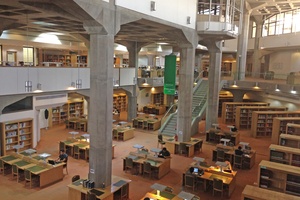
IH: When I first arrived in New Zealand, I was asked if we lived in tents with camels! Tehran is a metropolis of 18 million people and we lived in an apartment. It’s a matriarchal society. On the surface, and in the business and political world, men are in charge but behind the scenes, women rule the roost. Women are respected and allowed to follow any career path although they cannot be an Islamic judge (they are deemed “too emotional” for this task), or the President.
Nevertheless, a husband still has the legal right to stop his wife from studying and working on the grounds that these things are taking away from your chief responsibility, which is to look after the children. When I worked in architecture, I was always chaperoned onto building sites by a male colleague. The thinking was that ‘rough’ construction workers would not know how to treat a woman properly.
CM: You worked on the design of the National Library of Iran, in Tehran. Tell me about your role and the learnings that project gave you?
IH: I worked on the project first as a student and later as a graduate architect at one of Tehran’s well-known practices, Pirraz. The building was designed by the late Yousseff Shariatzadeh and it was a true privilege to play a part in its development and to watch him design. The library is colossal and houses approximately 15 million items over an area of 97,000 square metres.
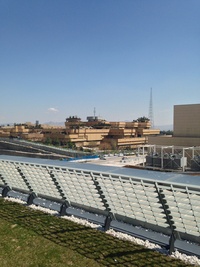
The design follows the principles of traditional Islamic architecture, breaking the building down to a rich collection of coherent, comfortable spaces surrounding internal courtyards and galleries. It was a process spanning many years and to me, the building demonstrates how the beauty and geometries of historic architecture can be moulded to the needs of our contemporary lives.
CM: That job sounds challenging and exciting, but you soon became disillusioned by the working environment in one of Tehran’s most celebrated studios. Why?
IH: Like many countries in the Middle East, Iran has a very hierarchical society where the working environment is formal – people are addressed by their full title, you know your place and don’t stray from it. Despite my deep love for architecture, I struggled. I am shy and found it difficult to find my voice, state my ideas and make progress. After a few years, I felt I was stalling and decided to quit architecture. It was a difficult decision but I was miserable, so six months after becoming registered, I left and started working as a translator and interpreter.
In December 1999, I travelled to Dublin to celebrate the millennium. It was the height of the Celtic Tiger and a huge amount of building was going on. When I was offered a job as an architect at Murray O’Laoire Architects, I took it. It was a very different environment. Work was done collaboratively, where people sat around a table as equals and were respectful of each other’s achievements. I fell in love with the profession all over again.

CM: Tell us about one of your most challenging assignments in Dublin?
IH: My last project in Ireland and at Murray O’Laoire Architects (MOLA) involved the restoration of Leinster House, a 1741 building which is the seat of the Irish Government. It was commissioned in collaboration with the Office of Public Works (OPW). This process included communication protocols and procedures that were unlike any other client I had ever worked with.
When the Department of Finance, who were funding the restoration, requested “price certainty”, a full-detailed investigation was needed to determine all work involved, a requirement that is almost impossible to meet on a restoration project of this scale without opening up large sections of a building that was still in daily use. The project later stopped as a result of the Global Financial Crisis. It is due to commence again this year but at a much smaller and more focused scale.
CM: After 18 years in the business, you are now an associate at Warren and Mahoney. What has smoothed the path?
IH: I have always been well supported, firstly by my parents who encouraged me to pursue a career I love and now by my husband who has backed me 100 per cent, allowing me to be the first one out of the house in the morning and the last one home. As a senior architect in full-time practice and a mother of two young daughters, I believe it is vital to demonstrate how it is possible to be whatever you want, living up to the promise we were offered as children. It’s one reason I would be reluctant return to Iran. I cherish the rights, freedom and opportunities that New Zealand offers.
CM: You are currently working on the New Zealand International Convention Centre (NZICC). What aspects of that are you enjoying and which parts are more difficult?

IH: NZICC is a unique building which occupies the larger part of an entire city block. It interacts with its urban setting on all sides and, by drawing the public through the site, activates the area around it. NZICC will change the face of the city. Seldom do we get the chance to work at this scale and with this level of detail and architectural complexity.
I am excited to be involved, particularly as the construction ramps up and the building takes shape, yet it is a huge responsibility to deliver the project as originally envisaged ensuring nothing is lost along the way. There is an element of guardianship and accountability that needs to be respected throughout all the challenges of design and construction.
CM: You are married to a Kiwi, an architectural designer whom you met in London. How does that influence the way you approach design?
IH: My husband Joe runs a design-and-build company with his father. We met in London where we worked at the same practice. Our worlds are different but the fundamentals remain the same. We strive to get a project finished to spec, within budget and on time – and deliver it to a smiling client. Living with Joe has made me more aware of buildability and construction matters. Every line drawn needs to be built; as architects, we should be aware of that without allowing it to clip our wings.
CM: You say there is still some discrimination against women in the construction and property arena in New Zealand. How so?

IH: In Iran, gender is a big issue. Men and women have set roles and responsibilities, and although modern life has started to blend the boundaries, there are still certain things you can or cannot do as a woman. I had always attributed such restrictions to the eastern world I grew up in and expected full equality in the west.
However, having lived outside of Iran for 18 years, I now know that is not the case. As a woman in what was traditionally considered a male industry, I still come across traces of discrimination that are far more subtle that those I grew up with but are nevertheless present in our society. It may not be a case of not being able to go on site without a chaperone but rather being side-lined at a meeting or excluded from certain selection pools. Sometimes being prohibited from something is easier to address than being ignored.
CM: Any closing thoughts about your career plans for the future?
IH: The way we live, study, travel and work is reflected in our built environment, so architecture is a fast-evolving discipline. Nothing and no-one is ‘average’. I am not your average Irishwoman and definitely not your average Iranian. My children are not your average Kiwis.
Our offices are no longer average workspaces, our teaching spaces don’t look like average classrooms and even our average homes are changing. That’s a good thing. My aim is to use what I have learnt over the years to mentor others and to demonstrate how we can indeed achieve that childhood promise of not being average.




